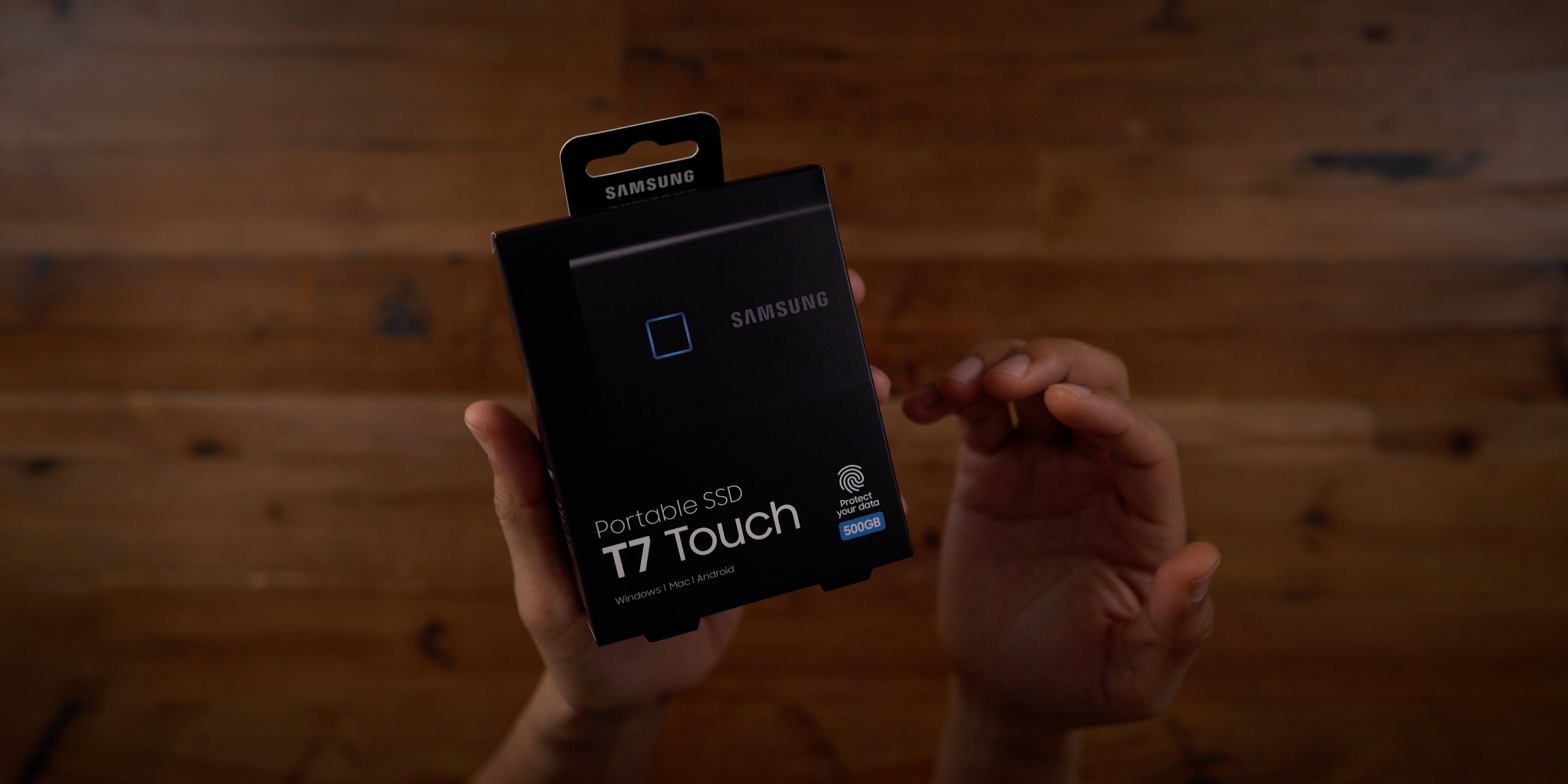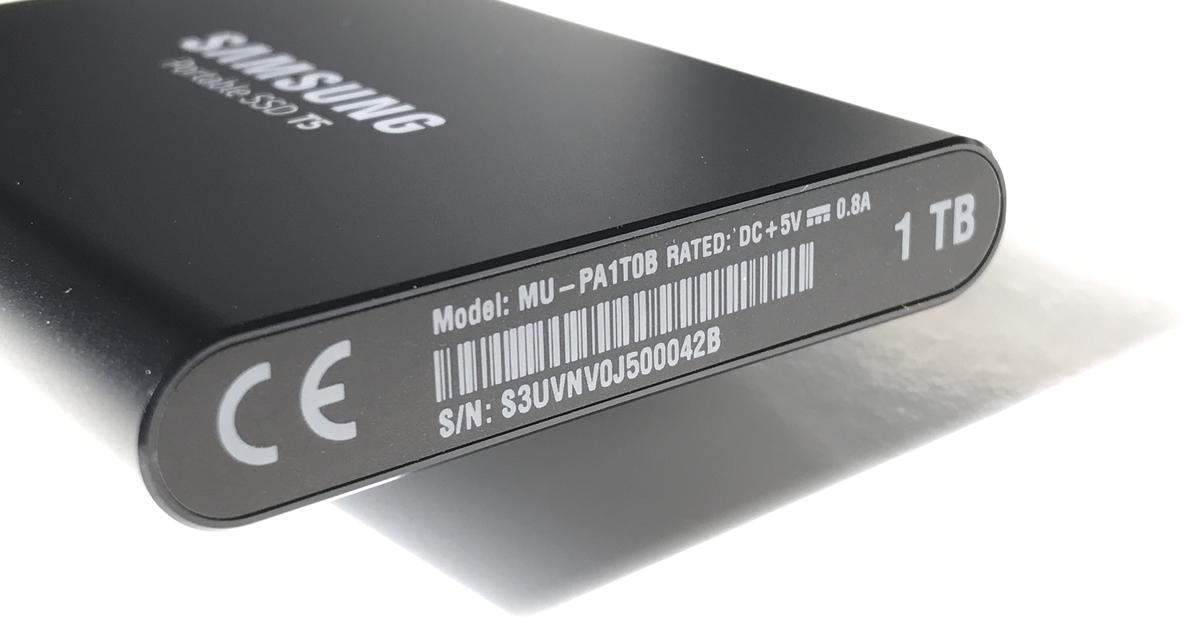Jun 30, 2019 So I used my T5 with a Windows at first, but I just got a Mac recently. At first, I have the same problem 'No SSD connected.' Then I realized that it happens because of the password in the T5 software I have set when I use my Windows Laptop. I just have to find a windows pc, disable my t5 password, then I'm able to use it until now. Similar to Samsung portable SSD T5, Samsung portable SSD T7 is also compatible with PC, Mac, Android devices and gaming consoles. The major difference between them is that Samsung portable SSD T7 is almost twice as fast as the T5 SSD. This Samsung portable SSD could be a nice choice if you need to transfer large files like games and videos.
You can't access a Sandisk, Crucial, or Samsung T3 when the external SSD is not recognized or detected by Mac, whether the external SSD was working for a long time or it's a new SSD you bought recently.
However, hard drives not working or showing up issue is so prone to happen even when you unplug the external SSD from the Mac and later on plug in the SSD again. It's definitely frustrating, especially when you have important files stored on it.
How can you fix the unrecognized external SSD and access your files stored on it? You'll find the solutions to fix the unrecognized or undetected external SSD in this post.

- 1. Check the connections
- 2. Reboot your Mac computer
- 3. Check the unrecognized external SSD in Disk Utility
- 4. Repair the unrecognized external SSD with First Aid
- 5. Reformat the unrecognized external SSD without data loss
- 6. Send the external SSD to a local technician
How to avoid data loss when external SSD not recognized on Mac?
As you can't access the important files on your external SSD that not showing up, data loss may happen. To avoid such a frustrating thing occurs, you'd better recover data from your unrecognized external SSD.
Besides, formatting your external SSD is one of the solutions (always the most efficient way) to fix this issue, so, data recovery of your external SSD is very necessary.
If you have a backup of your external SSD, you can skip this data recovery work. If not, you need to use some data recovery software.
iBoysoft Data Recovery Software for Mac is highly recommended here to recover lost data from unrecognized external SSD. It's a free and secure data recovery tool, which can recover lost data from corrupted, formatted, unreadable, and unmountable SSD. This software works on macOS Big Sur 11/10.15/10.14/10.13/10.12 and Mac OS X 10.11/10.10/10.9/10.8/10.7.
Moreover, iBoysoft Data Recovery for Mac supports main storage devices including hard drives, external hard drives, USB flash drives, SD cards, memory cards, etc. and multiple file formats such as documents, audios, pictures, videos, emails, etc.
Tutorial to recover lost data from unrecognized SSD on Mac with iBoysoft Data Recovery for Mac
- 1. Launch iBoysoft Data Recovery for Mac.
- 2. Select the unrecognized external SSD and click 'Next' to scan lost files on the drive.
- 3. Preview the scanning results, choose files we need, and click 'Recover' to get lost files back from the unrecognized external SSD.
- 4. Have a check to ensure we have recovered all lost files.
How to fix external SSD not recognized on Mac?
Solution 1: Check whether the external SSD is properly plugged in
Since all SSDs use SATA interface, so when an external SSD is not recognized by Mac, the first and foremost solution is to check whether the external SSD is properly plugged in. So simply do these checks:
- Check if the cable is working by connecting the external SSD with a different cable.
- Check whether your SSD is using SATA Ⅰ, Ⅱ, or Ⅲ so that your adapter/dock/case is compatible with your external SSD.
- Try a different SATA to USB adapter and make sure it works by plugging in a different drive.
- Try to connect the external SSD directly to your Mac if it's a type C drive, rather than accessing it via a USB-C adapter.
If the unrecognized external SSD is a Samsung T5/T3 SSD, and you got the 'System Extension Blocked' and 'No Samsung Portable SSD is connected' messages when executing Samsung Portable SSD Software, simply go to System Preferences > Security & Privacy > choose Allow button next to the message: System software from developer 'Samsung Electronics' was blocked from loading.
Solution 2: Reboot your Mac computer
Sometimes, Mac externalSSD not mounting issue is caused by the system issues. But you easily fix them by restarting. The restarting process will refresh your macOS's memory and starts it up fresh, which works efficiently especially when the USB port is busy. Simply choose the Apple menu and click Restart.
If you are interested in, you can learn what happened inside when Mac doesn't recognize an external drive with details.
Solution 3: Find the unrecognized external SSD in Disk Utility
When an external SSD is not showing up on Mac, the most necessary step is to check whether the external SSD can be found in Disk Utility. If the external SSD can be found in Disk Utility, you make sure that the drive doesn't have any hardware problems. But if you can't find it listed in Disk Utility, the external SSD might be physically damaged.
So simply Go > Disk Utility > View > Show All Devices to check the external SSD.
- If your external SSD is using Windows NTFS format, macOS won't mount the drive in writable mode. To write to an NTFS drive, you need to download a free NTFS for Mac driver.
- If you have used this external SSD on other computers for some time and now it is unrecognized by macOS, the file system of the SSD is either unsupportable or corrupted, you need to recover lost data from this external SSD and reformat the drive.
- If you newly bought this SSD and it is not initialized, you can't see the partitions of the external SSD in Disk Utility but receive an error message 'the disk you inserted was not readable by this computer'. In this case, you need to make sure you don't have any data on this drive and then initialize it in Disk Utility by erasing.

Solution 4: Repair the unrecognized external SSD with First Aid
If your external SSD shows up in Disk Utility but not mounted, you can right-click the drive and select Mount menu and then the SSD will show up on Mac. If the Mount button is grayed out or you fail to mount the external SSD, try running First Aid to verify and repair disk errors.
- 1. Launch Disk Utility.
- 2. Choose the grayed out external SSD from the left sidebar.
- 3. Select the 'First Aid' tab on the top.
Solution 5: Reformat the unrecognized external SSD without data loss
If all solutions above don't work, the external SSD might be corrupted and you need to reformat it. Whether the external SSD is not recognized due to logical disk errors or hardware problems, the most important is your files on the drive.
The thing is, reformatting will cause data loss. So, to prevent data loss, you need to get your files off this external SSD first if you forget to back up. iBoysoft Data Recovery for Mac will help you get your data back within a few clicks.
After your important data is recovered, you can go ahead to fix this issue by reformatting without data loss.
Tutorial to reformat the unrecognized external SSD
This guide to reformat external SSD will remove all data on the external SSD, please make sure you have recovered all useful files with iBoysoft Data Recovery.
- 1. Launch Disk Utility.
- 2. Select the external SSD on the left part of the window.
- 3. Click 'Erase' on the top of the Disk Utility window.
- 4. Complete related information (name, format, scheme), then click Erase.
Solution 6: Send the external SSD to a local technician for help
If unfortunately, the external SSD can't show up in Disk Utility or the solutions above failed to fix external SSD not recognized issue, the drive might have some hardware problems. You need to contact the manufacturer for technical support or product replacement.
• Fix SSD not showing up in Windows 10/8/7
Why is external SSD not recognized on Mac?
Samsung Portable Ssd Software T5 Mac Os
Various reasons are leading to external SSD not showing up issue on Mac. Here we conclude four main causes as below:
1. The SATA to USB 3.0 adapter/Dock is malfunctioned.
Usually, you need to buy an additional dock, disk case, or SATA adapter to access an SSD drive. During this process, if the externally connected SSD is not recognized by your Mac, it's likely that the adapter is not compatible with the disk's SATA interface, or the dock/drive caddy is faulty.
2. The external SSD is new and uninitialized.
This happens when users externally connect the SSD to backup or transfer files on the internal hard drive. But many newly bought SSDs are not initialized with a file system, which means there is no entrance for macOS to recognize and communicate with this SSD, and for sure, the external SSD won't show up.
3. The external SSD has a file system that can't be recognized by Mac.
Possibly, the SSD that you try to access is formatted with a file system. However, it's not a file system that your Mac can recognize. For example, it is formatted with a Linux file system. In this case, your macOS can't recognize the external SSD surely.
Drivers For Samsung T5 Ssd
4. New software or firmware needs to be updated.
Ssd Trim Software
This happens frequently for Samsung portable SSD T5/T3, because you need to install Samsung portable SSD Software to unlock disk's password and update certain firmware for this SSD. And if the necessary software and extension are not downloaded, you may receive 'No Samsung portable SSD is connected' from its software.
5. The external SSD is not set to show up on Mac.
Sometimes, your external SSD actually is recognized by the Mac, but some setups stop the SSD from showing up in the Finder, on the desktop, or even in the Disk Utility.
6. The external SSD is corrupted.
Another possible cause is that you have unsafely ejected your SSD, which makes the external drive corrupted after some core data like partition table or file system is damaged. Also, you need to be clear that the life span of an SSD is limited depending on how frequently you use it.
7. Other Hardware problems.
Samsung Portable Ssd T5 Software For Mac
Some SSD support pages you may need:
Samsung T5 Ssd Software Download
- Samsung: https://www.samsung.com/semiconductor/minisite/ssd/support/warranty/
- Crucial: https://uk.crucial.com/gbr/en/support?cm_re=top-nav-v2-_-flyout-support-_-support-home
- Intel:https://supporttickets.intel.com/?lang=en-US
- WD: https://www.westerndigital.com/support
- Kingston: https://www.kingston.com/en/company/warranty
- Toshiba: https://www.toshiba-memory.com/warranty/